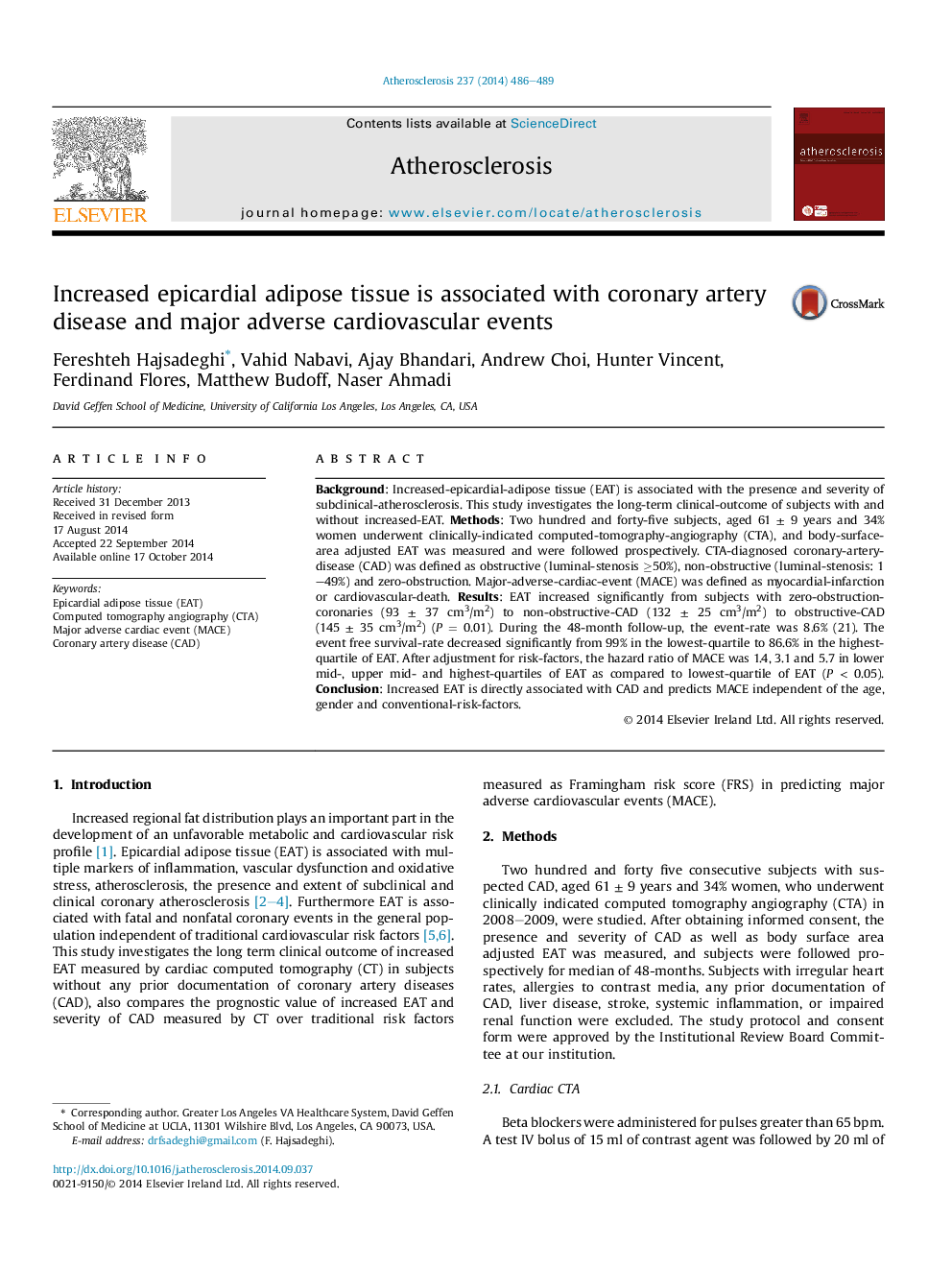| Article ID | Journal | Published Year | Pages | File Type |
|---|---|---|---|---|
| 5945314 | Atherosclerosis | 2014 | 4 Pages |
Background: Increased-epicardial-adipose tissue (EAT) is associated with the presence and severity of subclinical-atherosclerosis. This study investigates the long-term clinical-outcome of subjects with and without increased-EAT. Methods: Two hundred and forty-five subjects, aged 61 ± 9 years and 34% women underwent clinically-indicated computed-tomography-angiography (CTA), and body-surface-area adjusted EAT was measured and were followed prospectively. CTA-diagnosed coronary-artery-disease (CAD) was defined as obstructive (luminal-stenosis â¥50%), non-obstructive (luminal-stenosis: 1-49%) and zero-obstruction. Major-adverse-cardiac-event (MACE) was defined as myocardial-infarction or cardiovascular-death. Results: EAT increased significantly from subjects with zero-obstruction-coronaries (93 ± 37 cm3/m2) to non-obstructive-CAD (132 ± 25 cm3/m2) to obstructive-CAD (145 ± 35 cm3/m2) (P = 0.01). During the 48-month follow-up, the event-rate was 8.6% (21). The event free survival-rate decreased significantly from 99% in the lowest-quartile to 86.6% in the highest-quartile of EAT. After adjustment for risk-factors, the hazard ratio of MACE was 1.4, 3.1 and 5.7 in lower mid-, upper mid- and highest-quartiles of EAT as compared to lowest-quartile of EAT (P < 0.05). Conclusion: Increased EAT is directly associated with CAD and predicts MACE independent of the age, gender and conventional-risk-factors.
